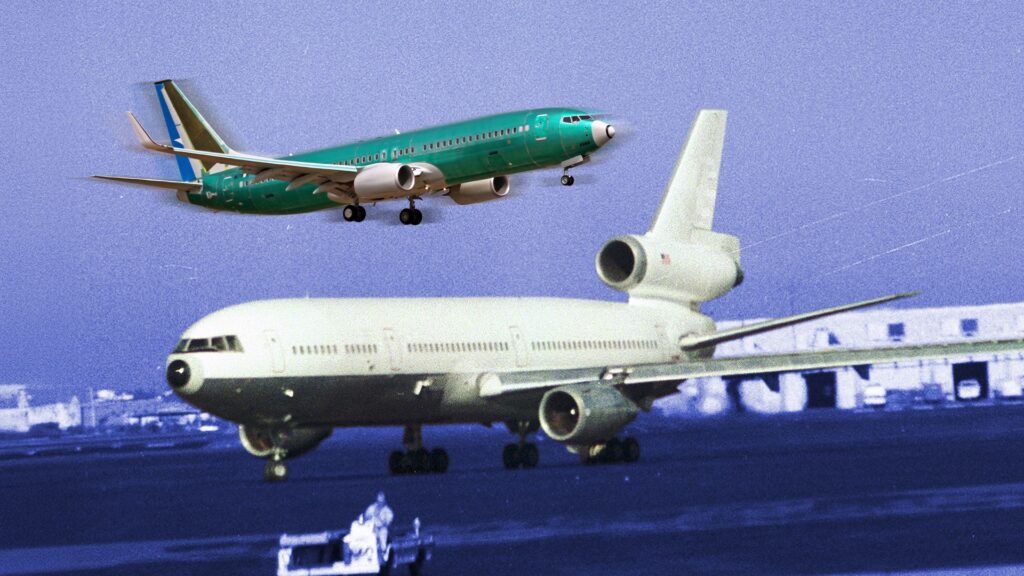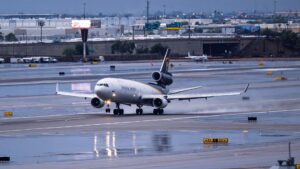
Boeing’s decision to merge with McDonnell Douglas in March 1997 aimed to bolster its military capabilities while addressing challenges in the commercial aviation sector. The merger came at a time when McDonnell Douglas was struggling with its commercial aircraft division but possessed a strong military portfolio, which Boeing sought to enhance.
Historical Context of Douglas Aircraft
The Douglas Aircraft Company, established in 1921 by Donald Wills Douglas Sr. in Santa Monica, California, was a pioneer in aviation. Its iconic DC-3, which once transported 90% of the world’s passengers, helped solidify Douglas’s reputation during the Golden Age of flying. Although initially reluctant to enter the jet market, Douglas found success with the DC-8, which was introduced alongside Boeing’s 707, making jet travel a mainstream reality.
Despite early successes, by the 1960s, Douglas faced financial difficulties, which led to a merger with McDonnell Aircraft, forming McDonnell Douglas in 1967. This new entity produced notable aircraft, including the DC-10 and MD-80, but struggled to maintain profitability in its commercial segment. By the time of the merger with Boeing, McDonnell Douglas’s military division had become its most valuable asset, producing successful aircraft like the F-15 Eagle and the F/A-18 Hornet.
Motivations Behind the Merger
Boeing’s merger with McDonnell Douglas was primarily motivated by the latter’s lucrative military capabilities, which were particularly appealing in the wake of fluctuating demand in the commercial aviation market. Boeing, already a significant supplier to the U.S. military, recognized the potential for growth in combining forces with McDonnell Douglas, which had a robust military lineup.
Upon merging, Boeing quickly discontinued the underperforming MD-11 and MD-90 product lines but rebranded the MD-95 as the Boeing 717-200. Despite initial hopes, the 717 also struggled in the market, with only 156 units sold before production ceased in 2006.
Boeing continued to produce military aircraft from the McDonnell Douglas portfolio, including the C-17 Globemaster III, which was manufactured until 2015. The merger allowed Boeing to leverage McDonnell Douglas’s established military contracts while aiming to stabilize its financial position.
Challenges Post-Merger
Following the merger, Boeing faced increasing scrutiny regarding its production quality, particularly with the 787 Dreamliner. Although it promised advancements in fuel efficiency and capacity, the Dreamliner was marred by production delays and quality control issues, leading to a tarnished reputation. The 2000s presented further challenges as the company dealt with the fallout from two tragic crashes involving the 737 MAX, attributed to flaws in the aircraft’s MCAS software.
These incidents triggered a significant decline in public confidence and prompted investigations into Boeing’s corporate culture and decision-making processes. Critics have noted that the merger allowed McDonnell Douglas executives to influence Boeing’s trajectory, leading to decisions that prioritized short-term gains over long-term sustainability.
Today, Boeing continues to grapple with the consequences of decisions made decades ago, as it seeks to restore its standing in the aviation industry. The legacy of the merger remains, as the company attempts to navigate the complexities of production and safety while rebuilding trust with customers and stakeholders.
In summary, Boeing’s merger with McDonnell Douglas was driven by strategic ambitions in military aviation, yet it has since been linked to a series of challenges that have reshaped the company’s reputation and operational practices. As Boeing confronts these issues, the impact of the merger continues to influence its path forward in an increasingly competitive aerospace landscape.






